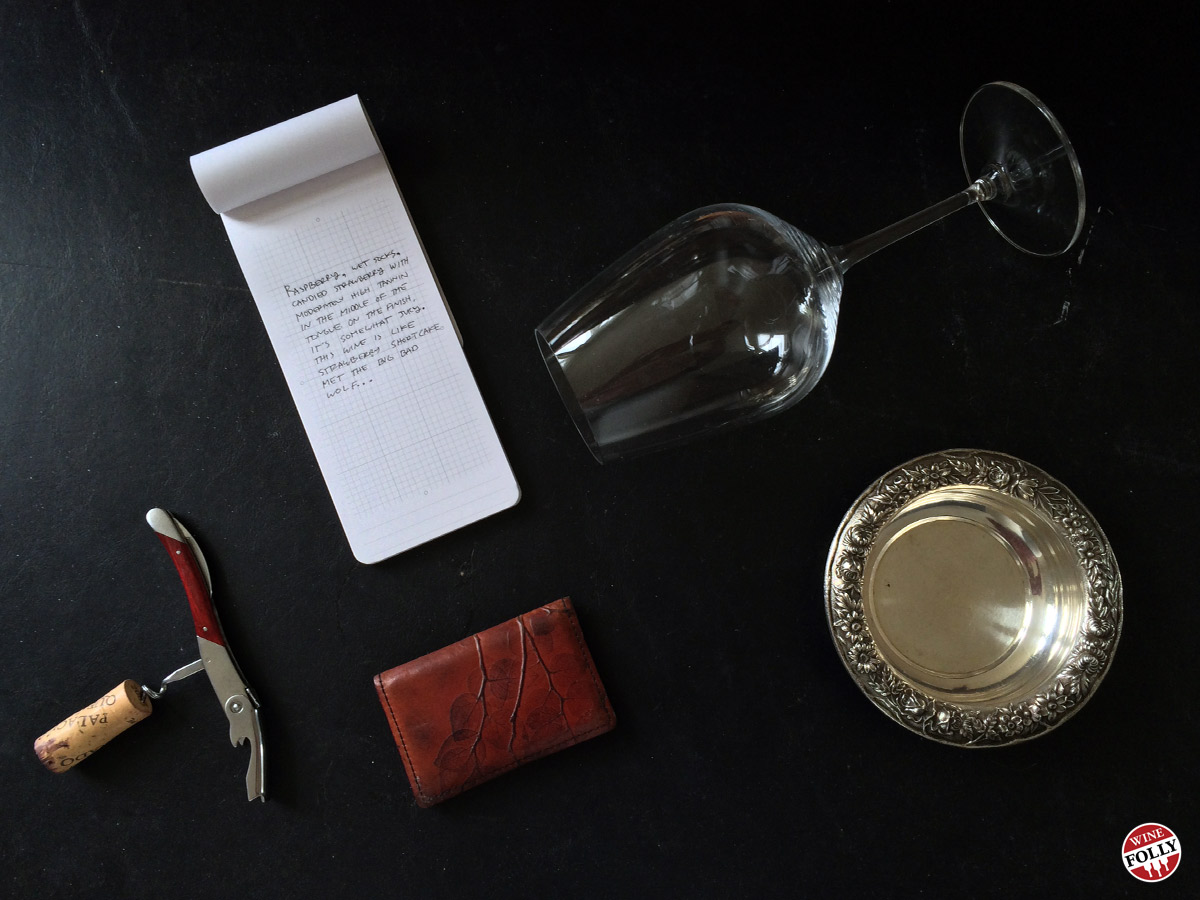Wine tasting notes should be one of the most useful tools to consult before buying a bottle of wine. In the past 20 years, wine tasting notes have shifted to consumer ratings that tend to be less biased. However, there is no standard for writing wine tasting notes. This guide will help you write more useful and accurate wine tasting notes.
First, to write great notes, it’s essential to ensure that your taste buds are receiving all the nuances of a wine.
For some tips, check out Geek Technique on How to Taste Red Wine. You also might like to take a look at The Basic Wine Guide.
How to Write Excellent Wine Tasting Notes
Identifying Wine Flavors and How to List Them
Wine aromas fall under three general categories:
- PRIMARY AROMAS: Aromas from the type of grape and the terroir. Primary aromas focus on fruit, herbal, and floral aromas.
- SECONDARY AROMAS: These are from the winemaking process. Secondary aromas include (but are not limited to) notes such as freshly baked bread and lager (from yeast), as well as sour cream and yogurt (from malolactic fermentation).
- TERTIARY AROMAS: These are aromas from aging in oak or the bottle. Tertiary aromas include clove, vanilla, baking spices, roasted nuts, dill, coconut, smoke, and a general shift in the fruit character from fresh to dried. Learn about oak aging.
Knowing where different wine aromas or bouquets come from will help you become better at writing your wine notes. Check out How to Taste Wine for more information on this topic.
TIP: When you write down flavors, try to list the most obvious ones first, helping create a hierarchy of importance.
What you mention first is important. For instance, “blackberry and pepper” sounds more fruit-forward than “pepper and blackberry.”
Also, try to include an adjective with your notes. Is it fresh pepper or dried pepper? Is it raspberry jam or tart, underripe raspberry? This specificity will help you hone in on details about a wine.
Also, don’t be scared of writing something that might sound a little silly. These notes are just for you, after all!

How to Describe Tannin, Acidity, and Body
- BODY: When you focus on the taste, you’ll be thinking about how the wine feels in your mouth. The body is perhaps the most obvious note, and it’s essential to mention because it helps build the profile of the wine you’re tasting in your mind. Skim? 2%? Or whole milk? Body in wine will roughly correspond with those textures. What’s the overall texture? Write it down.
- TANNIN: Tannin can seem tricky, but it’s easier if you focus on texture. Does the tannin have a lot of grip to it? (Does it make your lips stick to your teeth?). Does the tannin fill your mouth with delicate, tiny prickles? You can find some examples of wine descriptions used for tannin on our wine descriptions infographic. Tannin will always have intensity, but it can manifest as bruising, coarse, or fine and velvety.
- ACIDITY: Acidity is how tart or puckering a wine is. For instance, a wine with high acidity (low on the pH scale) will have acidity similar to that of lemon or lime. In contrast, wines with lower acidity are closer to the light acidity of a watermelon.
It’s All About the Finish
Have you ever noticed that when you first taste a wine, you can’t tell if you like it right away? It takes a second for you to get the full impression of the wine; you’re waiting for the finish — that moment after the flavor dissipates. The finish is often the defining moment of a wine; it can be the difference between the humdrum and spectacular. Here is a basic list of different types of finishes on a wine. You might consider these as general profiles the next time you’re wine tasting. These can be instrumental in identifying what you like in a wine.
- The Soft Finish – This is the classic ‘ahhh’ moment for most wine drinkers. While the wine may be completely dry, the finish has a note of softness and elegance; on reds, the tannins are gentle rather than forceful, but still present. On a white wine, it’ll often be about a broad, creamy texture.
- Tart and Tingly Finish – This type of wine tends to have a tart or bitter finish. It may have some green notes, but the acidity will tingle and persist on a good quality wine, giving it a delicate, mouthwatering, long finish. The refreshing nature of the tartness or bitterness drives you to another sip. This style isn’t as widely enjoyed — only about 50% of drinkers prefer it, but it has a small but serious following of supporters who love tart and savory flavors.
- ‘Juicy’ and ‘Fresh’ Finish – The wine words ‘juicy’ and ‘fresh’ often indicate a wine that has a lot of just-ripe fruit flavors on the finish, usually found on young wines from moderate climates. These juicy notes are commonly associated with ‘freshly’ made wine, which might be how the term came about.
But Wait, Where’s the Voice?
Will this system make wine tasting notes devoid of voice and art? There might be a way to add your style to the mix. Here are two examples: one is a bad note, and the other is pretty close to being useful.
Improve Your Palate
If you’re interested in improving your ability to taste wine, the most important step is to get into the mindset of actively tasting wine whenever you open a new bottle. We created a tasting mat set that will give you a consistent format in which to write your notes.


